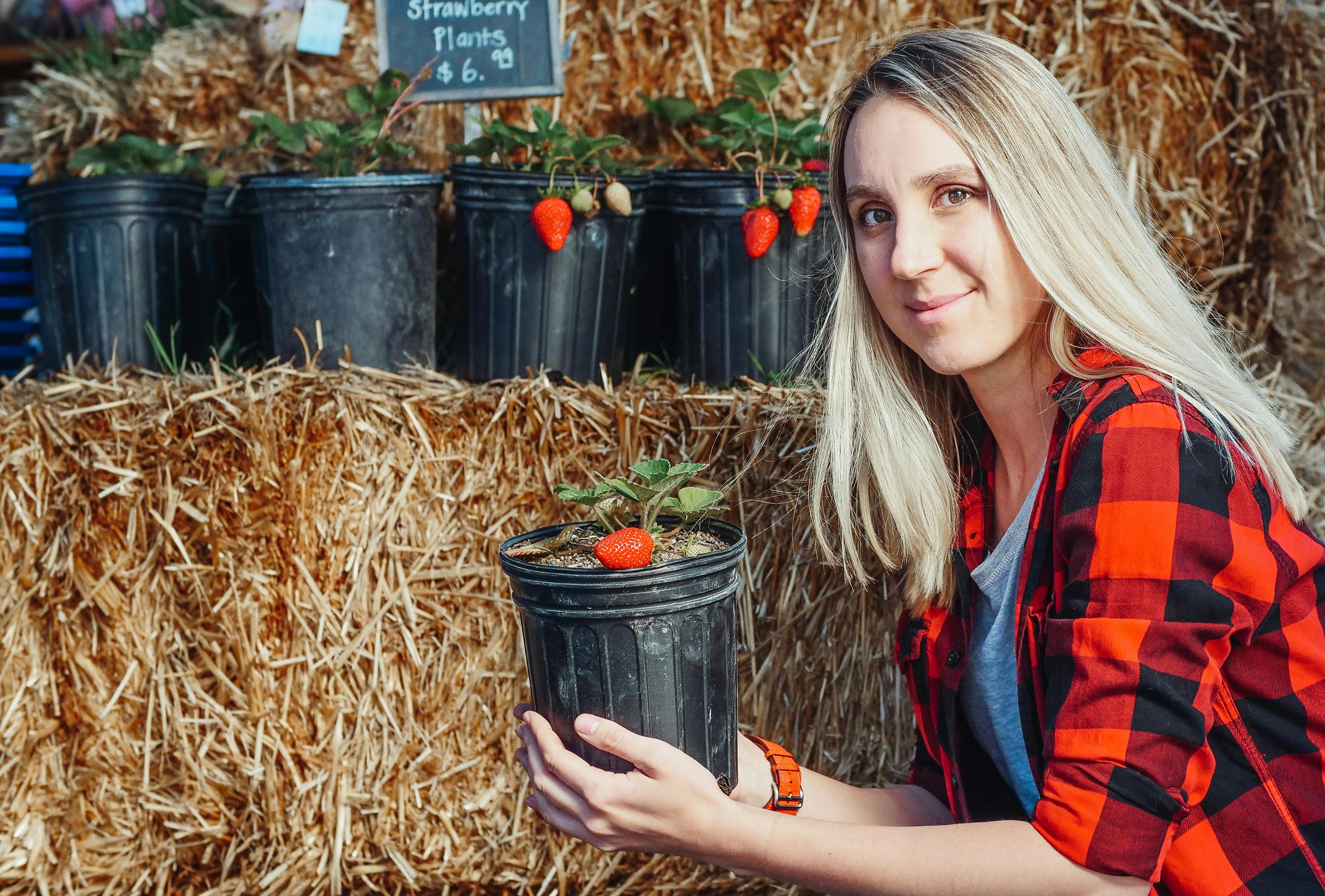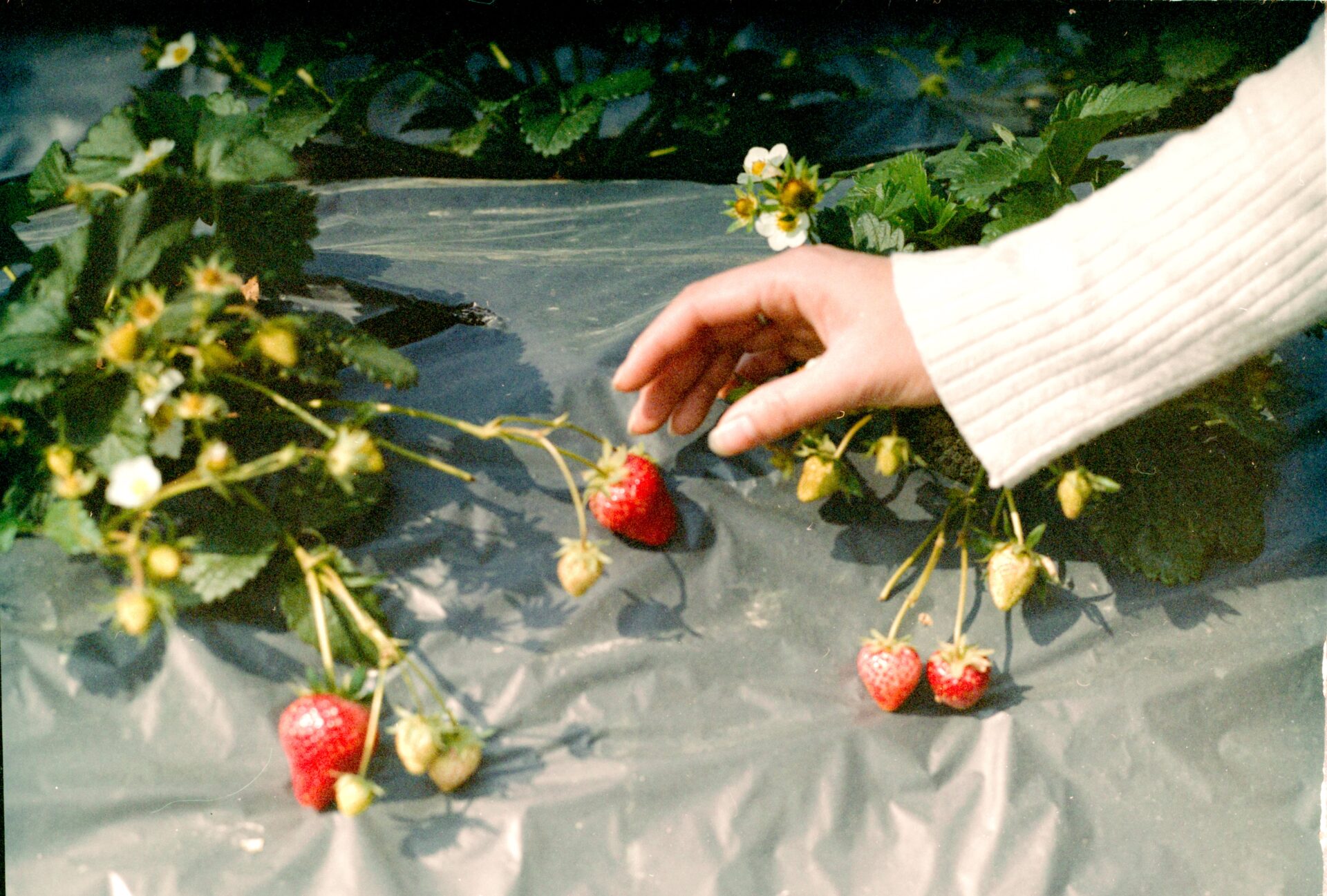If you are an avid gardener, you may have encountered the frustration of trying to grow strawberries but not having much success. Strawberries are one of the most popular fruits in the world and they can be grown in a variety of climates. Unfortunately, if your strawberries aren’t growing well, it could be due to a variety of different factors. In this article, we will discuss why your strawberries may not be growing properly and how you can fix it.There are several reasons why strawberries may not be growing. One reason could be a lack of sunlight. Strawberries require at least six hours of direct sunlight each day for optimal growth, and if the plants are not receiving enough sunlight, they will not produce fruit. Another possible cause of poor strawberry growth could be inadequate soil nutrients. Strawberries need a soil that is rich in organic matter and nitrogen to thrive, so if the soil does not have enough nutrients, the plants will suffer. Additionally, over-watering can also lead to stunted growth in strawberries. Therefore, it is important to water the plants carefully and only when necessary. Finally, some pests or diseases can also affect strawberry growth, so it is important to check the plants regularly for signs of insect damage or disease.
Improving Soil Quality for Growing Strawberries
Good soil health is essential for growing any type of crop, including strawberries. To improve the soil quality for growing strawberries, it is important to add organic matter such as compost or aged manure to the soil. This will help to increase the water-holding capacity of the soil and add nutrients that can benefit strawberry plants. Additionally, adding a layer of mulch can help reduce evaporation and keep weeds at bay.
For best results, strawberries should be planted in full sun in a well-draining soil with a pH between 5.5 and 6.8. A soil test can be used to determine the existing pH and nutrient levels, which can then be adjusted with lime or fertilizer if needed. It is also important to rotate strawberry crops every season to prevent diseases from building up in the soil.
To further improve soil health, consider adding cover crops such as clover or rye grass between seasons. Cover crops will help build organic matter in the soil and suppress weeds while also providing habitat for beneficial insects and birds. Additionally, using natural fertilizers such as compost tea on a regular basis can help ensure that strawberry plants have access to all the nutrients they need for optimal growth and production.
By taking these steps to improve soil health, gardeners can create an ideal environment for growing healthy and productive strawberry plants that will yield abundant harvests of delicious fruit each season!
Benefits of Applying Fertilizer to Help Grow Strawberries
Applying fertilizer to help grow strawberries can have many benefits. Fertilizer helps provide essential nutrients to the strawberry plant, allowing it to grow stronger and healthier. Fertilizer also encourages better fruit production by providing the plants with the necessary nutrients for producing large, juicy berries. Additionally, using fertilizer helps increase the yield of the strawberry crop by providing a greater number of fruits per plant. Furthermore, fertilizer helps bolster soil health and fertility, ensuring that strawberry plants will have access to the right amount of nutrients for optimal growth and fruit production.
Fertilizer also helps improve the overall quality of strawberries by making them more flavorful and attractive in appearance. Applying fertilizer will also help ensure that strawberry plants are better able to withstand diseases and pests, helping protect your crop from potential losses. Finally, using fertilizer can help reduce water waste as it reduces the need for excess watering due to its ability to make soil more absorbent. This in turn can help conserve water resources and reduce water bills.
In conclusion, applying fertilizer to help grow strawberries provides numerous benefits that make it an essential part of any successful strawberry growing operation. By providing essential nutrients for growth, increasing yields, improving flavor and appearance, protecting against disease and pests, and conserving water resources, applying fertilizer is an invaluable tool in helping ensure a healthy and productive strawberry crop.
How Much Water Does a Strawberry Plant Need?
Strawberry plants are relatively easy to maintain and require very little water. However, understanding how much water your strawberry plant needs is key to ensuring it grows healthy and produces delicious fruit. Generally, strawberry plants need about an inch of water per week. This should be divided into two to three shorter sessions rather than one long one to make sure the water is being absorbed properly. If it is particularly hot or dry, you may need to increase the amount of water your strawberry plant receives.
It is important to pay attention to the soil when watering your strawberry plant; if it feels dry or crumbly when touched, that’s a sign that more water is needed. You can also check the leaves for signs of stress; if they are starting to curl or turn yellow, this could be an indication that your plant needs more water. Always check for signs of over-watering too; if the soil feels too wet or soggy, this could lead to root rot and other problems.
When applying water to your strawberry plant, it’s best to use a soaker hose or drip irrigation system as opposed to a sprinkler. This will ensure that all parts of the plant receive an even amount of moisture without any areas becoming oversaturated with water. Additionally, you should avoid getting any foliage wet when watering as this can lead to fungal diseases such as powdery mildew and gray mold.
Finally, if you live in an area with very hot summers, you may need to increase the amount of water your strawberry plants receive during those months in order to keep them healthy and productive. In general, try not to over-water your plants but do make sure they get enough moisture so they can reach their full potential!
Sunlight is Required for Growing Strawberries
Strawberries are one of the most popular and widely cultivated fruits in the world. Growing strawberries requires plenty of direct sunlight to produce healthy and productive plants. Due to their shallow root systems, strawberries are particularly susceptible to inadequate light. In order to get the maximum yields from your strawberry patch, it is important to ensure that your plants are receiving enough light.
When growing strawberries, each plant should receive at least six hours of direct sunlight every day for optimal growth and fruiting. If you have a sunny yard, then this shouldn’t be a problem; however, if your yard is shady or partially shaded, then you may need to take additional measures to ensure that your plants are getting enough sun. One way to do this is by planting in raised beds or containers which can be moved around as needed in order to follow the sun’s path throughout the day.
If you live in an area with very hot summers, it is important to provide some shade for your strawberry plants during the hottest parts of the day in order to protect them from heat stress. This can be done by putting up a tarp or other shade structure over your plants, or simply moving them into a shadier spot temporarily. It is also important not to let the soil around your strawberry plants dry out completely; they require consistent moisture in order for their roots to stay healthy and productive.
Overall, growing strawberries requires plenty of direct sunlight in order for optimal growth and fruiting. It is important that each plant receives at least six hours of direct sunlight each day, and if necessary additional measures should be taken such as planting in raised beds or providing some shade during particularly hot days. With proper care and attention, you can enjoy an abundant harvest of fresh strawberries right from your own backyard!

Protecting Strawberry Plants From Pests
Strawberries are a popular fruit and can be grown in many climates. However, they are vulnerable to pests that can cause damage to the plants and reduce the yield of the fruit. Protecting your strawberry plants from pests is essential for a successful harvest. Here are some tips to help protect your strawberry plants from pests:
The first step in protecting your strawberry plants from pests is to ensure that they are planted in an area with plenty of sunlight and well-draining soil. This will minimize the risk of fungi and other microbial diseases that can cause damage to the plants. Additionally, avoid over-watering or using too much fertilizer as this can attract pest species.
It is also important to inspect your strawberry plants regularly for signs of pests. Inspect the leaves and stems for signs of chewing, discoloration, or any other abnormalities. If you find any signs of pests, take action immediately to prevent them from spreading further.
You should also consider using physical barriers such as row covers or insect netting to protect your strawberry plants from pest insects such as aphids, moths, or beetles. This will help prevent them from reaching the plants and doing damage.
In addition, you can use biological control methods such as beneficial insects or microbes to naturally control pest populations on your strawberry plants. These beneficial organisms feed on the pests and help keep their populations under control without harming the plants themselves.
Finally, you can use chemical pesticides if necessary but only after careful consideration as these may have unintended consequences on beneficial organisms in your garden or surrounding environment. It is best to consult with a local expert before applying chemical pesticides so that you can make sure that they are used safely and effectively.
By following these tips, you should be able to keep your strawberry plants safe from pests and enjoy a successful harvest each season!
How to Identify and Treat Common Strawberry Diseases
Strawberries are a popular fruit that can be enjoyed in a variety of ways. However, they can be prone to disease, which can affect their flavor and health. It is important to know how to identify and treat common strawberry diseases in order to maintain healthy plants.
The first step in identifying strawberry diseases is to inspect the plants for any visible signs. Look for discolored or wilted leaves, yellowing or brown spots on the fruit, and any other abnormalities. If any of these symptoms are present, it could indicate the presence of a disease.
Once you have identified potential signs of disease, it is important to take action quickly in order to prevent further spread. The best way to do this is by removing affected plants and disposing of them properly, such as by burning or burying them away from other plants. Additionally, proper sanitation practices should be followed when caring for strawberries, such as cleaning tools after use and avoiding overhead irrigation where possible.
In some cases, treating the affected strawberries with fungicides may be necessary in order to stop the spread of disease. Fungicides should only be used when absolutely necessary and according to the manufacturer’s instructions. Additionally, it is important to ensure that the fungicide used is specifically designed for use on strawberries as different types of fungicides work differently on different types of plants.
Finally, preventative measures are the best way to avoid diseases in your strawberry crop altogether. This includes planting resistant varieties, maintaining good drainage in soil, providing adequate ventilation around plants, ensuring proper spacing between rows and plants, avoiding overhead irrigation when possible and keeping weeds down.
By following these steps and taking timely action when necessary, you can help protect your strawberry crop from common diseases and enjoy healthy fruits for many years to come.
What Temperature is Best For Growing Strawberries?
Growing strawberries in the garden is a great way to enjoy fresh, homegrown fruit in the summer. However, like most plants, strawberries have specific temperature needs for optimal growth. Strawberries prefer mild temperatures and will grow best when temperatures range between 60°F and 70°F (15°C – 21°C). Temperatures above 80°F (26°C) can cause the fruit to become heat-stressed and could result in a poor crop. Cold nights can also be an issue for strawberry plants, as temperatures below 53°F (12°C) can lead to flower and bud damage. It’s important to note that while strawberries may survive colder temperatures, they will not produce fruit until it warms up again.
In addition to moderate temperatures, strawberries also need plenty of sunlight for optimal growth. When planting strawberries in your garden, it’s best to choose a spot that receives at least six hours of direct sunlight per day. While some shade is ok, too much shade can lead to smaller fruits and a decrease in overall yield from your strawberry plants. With the right combination of temperature and sunlight, your strawberry plants will thrive and provide you with plenty of delicious fruit!

Conclusion
Strawberries are a popular fruit that can be grown at home with a little bit of knowledge and care. However, if your strawberries are not growing, there are several possible causes. These include inadequate soil fertility, poor drainage, insufficient light, lack of pollination, and pest or disease issues. Understanding the reasons for your plant’s failure can give you clues on how to get your strawberry plants to thrive. Proper soil preparation and proper planting techniques are essential for successful strawberry production. Additionally, selecting the right varieties and providing adequate moisture and nutrients will help ensure strong growth and good yields.
Good luck with your strawberry growing endeavors! With proper care and attention, you’ll be enjoying sweet strawberries from your own garden in no time!



